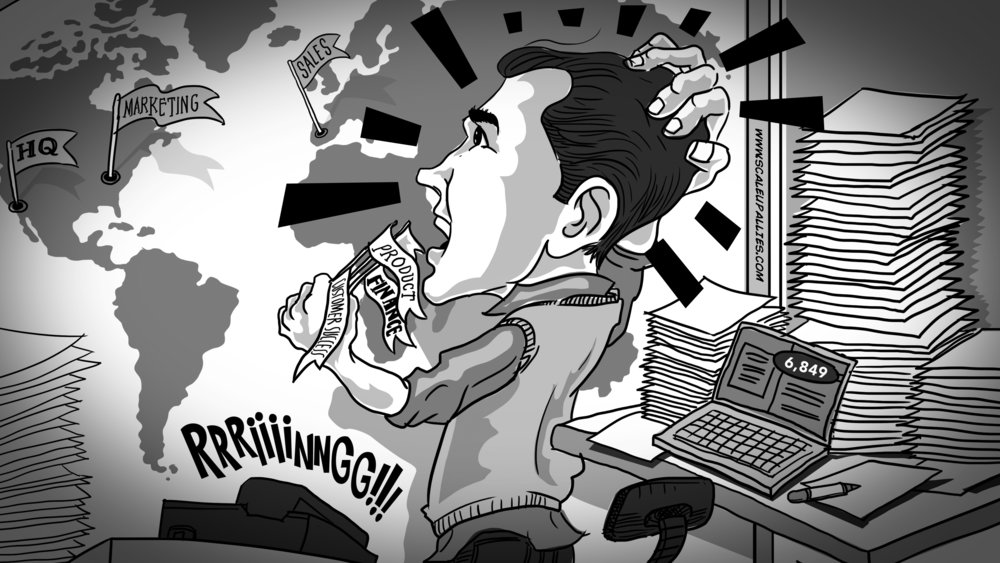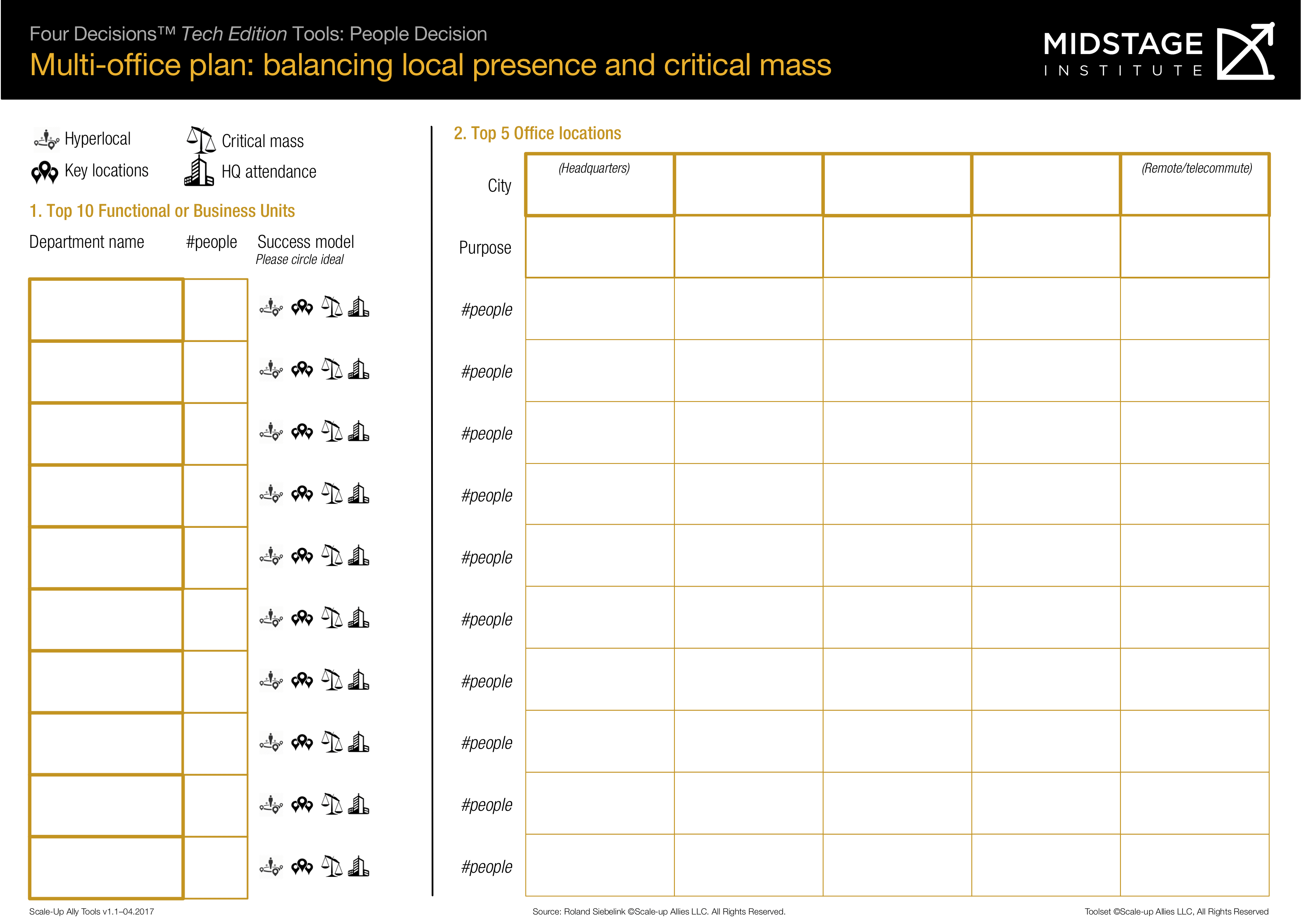Multi-Office Scaleups: Where to Hire What Function?

Distributing or Centralizing Teams
Multi-office scaleups struggle to organize their teams efficiently. Once your scaleup has several offices, how do you organize your teams? Should each function have representatives in each location? Or should certain functions remain centralized in headquarters? And if so, which?
Many scaleups struggle with these decisions as they grow. This is why I have developed a one-page tool to plan resources across different locations. You can download below if your scaleup is struggling with the same issue.
Multi-office Scaleups Rule #1: accept the trade-off
The first thing to understand: centralized and decentralized models are a trade-off
-
The more you decentralize resources, the more you optimize for local responsiveness: sales and service people who are close to the customer;
-
people in international markets who speak the local language;
-
customers served only by specialists in their vertical.
Decentralization means you can fulfill customer desires better, but at a higher cost. It values effectiveness over efficiency.
The more you centralize resources, the more you optimize for economies of scale
-
Easy reallocation of development teams to new projects;
-
Call center agents covering for each other while on breaks;
-
Stronger bargaining power from suppliers.
Centralization means you combine forces, but your customers get a more generic experience. It values efficiency over effectiveness.
The best scaleups thrive because they reconcile this dilemma. They reach both effectiveness and efficiency.
This is why the team allocation to different locations is such a difficult choice to make. You are facing a trade-off, even though you need to serve both sides of that trade-off.
Multi-office Scaleups Rule #2: purpose by location
-
Do you face much tension around who should hire where? If so, have you defined what the purpose of each location is in your scaleup? For example…
-
Is your Chicago office a regional headquarters or a sales office?
-
Does the sales guy you hired in Singapore constitute a full office location?
-
Reach office managing its own profit and loss or would you rather manage those by region?
-
Is your headquarters a sales office in its own right or just supporting the frontline offices?
Providing clear purposes before creating the hiring plan will help avoid much tension. It also sets clear expectations how much of a career path people can expect in a certain location.
Multi-office Scaleups Rule #3: differentiate by function
What is the key to reconciling efficiency with effectiveness? It is to make different decisions for each function or department.
Some departments should be completely local, others should be completely central. Many end up in-between: skewing local (key locations) or skewing central (critical mass).
Differentiating by function sets up the healthy tension that makes a scaleup successful. Local functions can take tactical decisions in their area without resorting to headquarters. Central functions gain buy-in for strategic decisions by creating momentum among local functions.
The key is to determine which functions to centralize and which to decentralize. This is what our one-page tool can help with.
Multi-office Scaleups Rule #4: the success model
Each function has a “success model”: key deliverables and key success factors contributing. For example
-
Sales will bring in new contracts. Key success contributors are good relations, responsive tenacity and flexibility.
-
Engineering builds reliable systems. Key success contributors are redundancy in systems, robust testing and a well-managed architecture.
A function’s success factors determine if decentralization or centralization makes most sense. For example
-
Sales’ success factors point to a local bias. It is hard to maintain good relations from a distance, or to be responsive across several time zones.
-
But Engineering usually has a central bias. Redundant systems in each location with customers would be cost prohibitive. It is also easier to enforce robust processes when people are generally in the same location.
